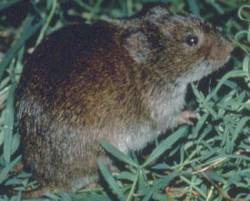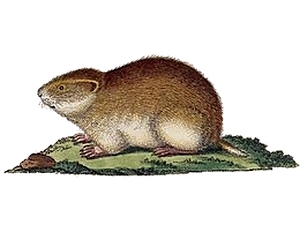
The Arctic fox, also known as the white fox, polar fox, or snow fox, is a small fox that belongs to the family of Canidae, native to the Arctic regions of the Northern Hemisphere and common throughout the Arctic tundra biome. It is well adapted to living in cold environments, and is best known for its thick, warm fur that is also used as camouflage. It has a large and very fluffy tail. In the wild, most individuals do not live past their first year but some exceptional ones survive up to 11 years. Its body length ranges from 46 to 68 cm, with a generally rounded body shape to minimize the escape of body heat.

The snowy owl, also known as the polar owl, the white owl and the Arctic owl, is a large, white owl of the true owl family. Snowy owls are native to the Arctic regions of both North America and the Palearctic, breeding mostly on the tundra. It has a number of unique adaptations to its habitat and lifestyle, which are quite distinct from other extant owls. One of the largest species of owl, it is the only owl with mainly white plumage. Males tend to be a purer white overall while females tend to more have more extensive flecks of dark brown. Juvenile male snowy owls have dark markings that may appear similar to females until maturity, at which point they typically turn whiter. The composition of brown markings about the wing, although not foolproof, is the most reliable technique to age and sex individual snowy owls.

The Arvicolinae are a subfamily of rodents that includes the voles, lemmings, and muskrats. They are most closely related to the other subfamilies in the Cricetidae. Some authorities place the subfamily Arvicolinae in the family Muridae along with all other members of the superfamily Muroidea. Some refer to the subfamily as the Microtinae or rank the taxon as a full family, the Arvicolidae.

The Norway lemming, also known as the Norwegian lemming is a common species of lemming found in northern Fennoscandia, where it is the only vertebrate species endemic to the region. The Norway lemming dwells in tundra and fells, and prefers to live near water. Adults feed primarily on sedges, grasses and moss. They are active at both day and night, alternating naps with periods of activity.

The eastern meadow vole, sometimes called the field mouse or meadow mouse, is a North American vole found in eastern Canada and the United States. Its range extends farther south along the Atlantic coast.

The southern bog lemming is a small North American lemming. Its range overlaps with the other species in genus Synaptomys, the northern bog lemming, in southeastern Canada, but extends farther south.

The steppe lemming or steppe vole is a small, plump, light-grey rodent, similar in appearance to the Norway lemming, but not in the same genus. The steppe lemming eats shoots and leaves and is more active at night, though it is not strictly nocturnal. In the wild, it is found in Russia and Ukraine in steppes and semiarid environments. Fossil remains of this species have been found in areas as far west as Great Britain.

The genus Lemmus contains several species of lemming sometimes referred to as the true lemmings. They are distributed throughout the Holarctic, particularly in the Palearctic.

The Canadian lemming or Nearctic brown lemming is a small North American lemming.

The grey red-backed vole or the grey-sided vole is a species of vole. An adult grey red-backed vole weighs 20-50 grams. This species ranges across northern Eurasia, including northern China, the northern Korean Peninsula, and the islands of Sakhalin and Hokkaidō. It is larger and longer-legged than the northern red-backed vole, which covers a similar range and it is also sympatric with the Norwegian lemming.

The California vole is a type of vole which lives throughout much of California and part of southwestern Oregon. It is also known as the "California meadow mouse", a misnomer as this species is a vole, not a mouse. It averages 172 mm (6.8 in) in length although this length varies greatly between subspecies.

The Arctic lemming is a species of rodent in the family Cricetidae.

The WestSiberian lemming or Western Siberian brown lemming is a true lemming species found in the Russian Federation. Like other lemmings, it belongs to the Cricetidae family of rodents.

The montane vole is a species of vole native to the western United States and Canada.

The wood lemming is a species of rodent in the family Cricetidae. It belongs to the rodent subfamily Arvicolinae, so is a relative of the voles, lemmings, and muskrats. It is found in the taiga biome of China, Estonia, Finland, Mongolia, Norway, Russia, and Sweden.
James Algar was an American film director, screenwriter, and producer. He worked at Walt Disney Productions for 43 years and received the Disney Legends award in 1998. He was born in Modesto, California and died in Carmel, California.
Animal suicide is when an animal intentionally ends its own life through its actions. It implies a wide range of higher cognitive capacities that experts have been wary to ascribe to nonhuman animals such as a concept of self, death, and future intention. There is currently not enough empirical data on the subject for there to be a consensus among experts. For these reasons, the occurrence of animal suicide is controversial among academics.















